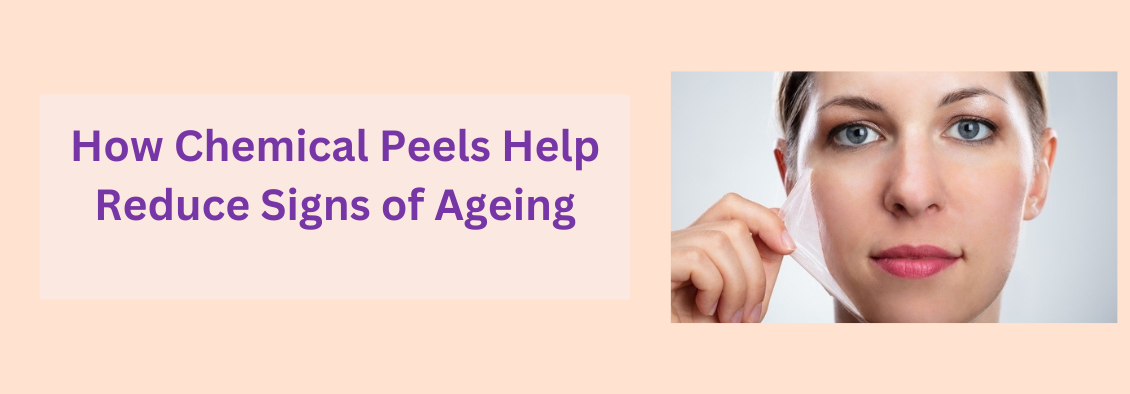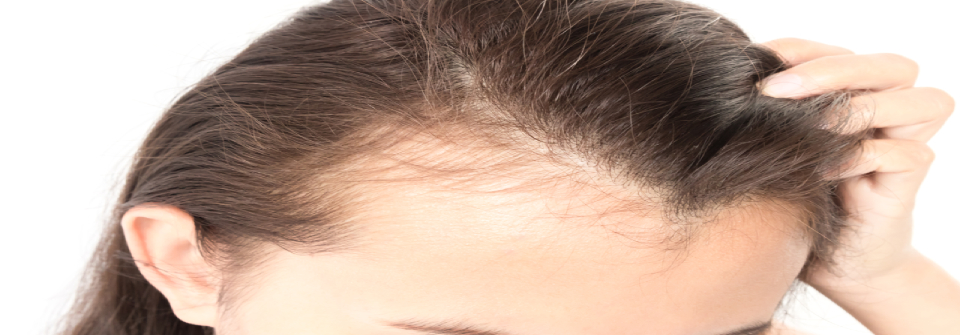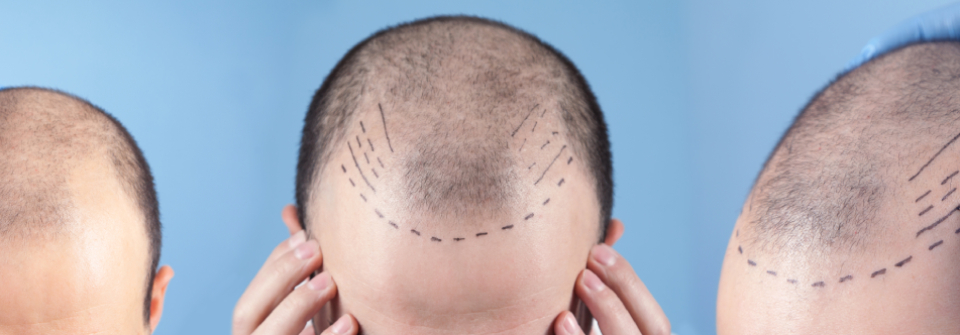
How Chemical Peels Help Reduce Signs of Ageing
As we age, our skin undergoes numerous changes, leading to the development of fine lines, wrinkles, and a loss of elasticity. One popular and effective solution to combat these signs of aging is chemical peel treatment. By exfoliating the skin's outermost layers and stimulating the growth of new skin, chemical peels help reveal a more youthful and radiant complexion.
In this blog, we will explore how chemical peels for face can help reduce the signs of ageing and rejuvenate your skin.
Understanding Chemical Peels
A chemical peel is a skin-resurfacing procedure where a solution is applied to the skin to remove dead and damaged cells. This triggers the regeneration of newer, smoother skin with a more even texture and tone. Chemical peels can be categorized into three types based on the depth of penetration:
1. Light Peels:
These contain mild acids, like alpha-hydroxy acid (AHA), that only exfoliate the outermost layer of the skin, improving its texture and reducing fine lines.
2. Medium Peels:
Using ingredients like trichloroacetic acid (TCA), medium peels penetrate deeper to treat moderate wrinkles, age spots, and uneven skin tone.
3. Deep Peels:
Deep peels, such as those using phenol, target more severe skin concerns, like deep wrinkles and sun damage. They completely penetrate the middle layer of skin, promoting more significant rejuvenation.
Benefits of Chemical Peels for Ageing Skin
Chemical peels for face offer a range of anti-ageing benefits, making them a favored treatment for those seeking to reduce visible signs of ageing.
1. Reduction of Fine Lines and Wrinkles
The primary benefits of glycolic peels is their ability to reduce the appearance of fine lines and wrinkles. By removing the damaged outer layer of skin, peels encourage the production of new skin cells, leading to smoother and more youthful-looking skin. Light to medium peels are especially effective at targeting wrinkles around the eyes, mouth, and forehead.
2. Improvement in Skin Tone and Texture
With age, the skin’s texture can become uneven, and its tone may darken due to factors like sun exposure and the loss of collagen. Chemical peels help improve skin texture by sloughing away dead cells and promoting new cell turnover. As the damaged skin is replaced with fresh layers, the skin becomes smoother and more radiant.
3. Boosting Collagen Production
Collagen is essential for maintaining the skin’s firmness and elasticity. As we age, collagen production slows down, leading to sagging skin. Medium and deep chemical peels stimulate collagen production, which helps plump the skin, making it firmer and more resilient. This collagen boost helps diminish fine lines and reduces the appearance of wrinkles over time.
4. Reducing Age Spots and Hyperpigmentation
Age spots, also known as liver spots, are areas of hyperpigmentation that become more prominent with age. Chemical peels can lighten these spots by removing the layers of skin that contain excess pigmentation. This results in a more even skin tone and a reduction in dark spots, providing a more youthful appearance.
5. Minimizing the Appearance of Large Pores
Enlarged pores can be a sign of aging skin. Chemical peels, particularly medium-depth peels, help to unclog and shrink pores, leading to a smoother surface. By tightening the skin and improving its texture, chemical peels reduce the visibility of large pores.
How Chemical Peels Work
Chemical peels work by applying a specially formulated solution to the skin. Benefits of glycolic peel solution causes the outer layer of the skin to exfoliate and eventually away. Depending on the type of peel, this exfoliation process can target different depths of the skin, helping to resolve various skin issues.
During the peeling process, dead skin cells are shed, and the skin’s natural healing process is triggered, which promotes the growth of new, healthy skin cells. The result is smoother, brighter, and younger-looking skin.
The Chemical Peel Process
A chemical peel treatment typically involves several steps to ensure the best results:
1. Consultation:
Before undergoing a chemical peel, it is essential to consult with a dermatologist or skincare professional. They will assess your skin type, discuss any skin concerns, and determine the appropriate peel for your needs.
2. Pre-Treatment Preparation:
In the days leading up to your chemical peel, it is crucial to follow a gentle skincare routine. This includes using mild cleansers, moisturizing regularly, and avoiding harsh exfoliants or treatments that could irritate the skin.
3. The Procedure:
During the procedure, the chemical solution is applied to your skin, and you may feel a mild tingling or burning sensation. The peel remains on the skin for a set amount of time before being neutralized or removed. Depending on the depth of the peel, the recovery time can vary.
4. Post-Treatment Care:
After the treatment, it is important to follow post-care instructions provided by your dermatologist. This may include avoiding direct sunlight, using sunscreen, and moisturizing frequently to keep the skin hydrated.
Post-Treatment Recovery and Care
Following a chemical peel, your skin will be more sensitive, and proper aftercare is essential for optimal results. Here are some tips for managing the recovery process:
Sun Protection:
Since the skin will be highly sensitive after a peel, using a broad-spectrum sunscreen with high SPF is critical to prevent damage and maintain the peel's results.
Moisturizing:
Keep the skin hydrated by using a gentle, nourishing moisturizer to promote healing and prevent dryness or flaking.
Avoid Exfoliation:
Your skin is already in the process of shedding old layers, so avoid using any physical or chemical exfoliants that could irritate the skin further.
Patience with Results:
Depending on the depth, your skin may take a few days to a few weeks to heal fully. Be patient, as the results will become more noticeable over time.
Understanding the Costs of Chemical Peels for Face
As you consider rejuvenating your skin with chemical peels for face, it’s important to understand the cost factors associated with the treatment. The face peeling treatment price can vary depending on the type of peel and the skin concerns being addressed. For instance, a light glycolic peel cost is less compared to a medium or deep peel, which provides more extensive results. Additionally, if you are dealing with acne, an acne peeling treatment price will depend on the severity of the condition and the type of peel used. Consulting a skincare professional will help determine the most suitable peel and pricing for your needs.
Conclusion
Chemical peels are an excellent option for individuals looking to reduce the visible signs of aging, such as fine lines, wrinkles, age spots, and uneven skin tone. By promoting new skin cell growth and boosting collagen production, chemical peels help rejuvenate the skin, making it appear smoother, firmer, and more youthful.
Before opting for a chemical peel, it is important to consult with a skincare professional to determine the right treatment for your skin type and concerns. With proper care and maintenance, chemical peels for face can offer long-lasting results, leaving you with a refreshed and youthful complexion.












